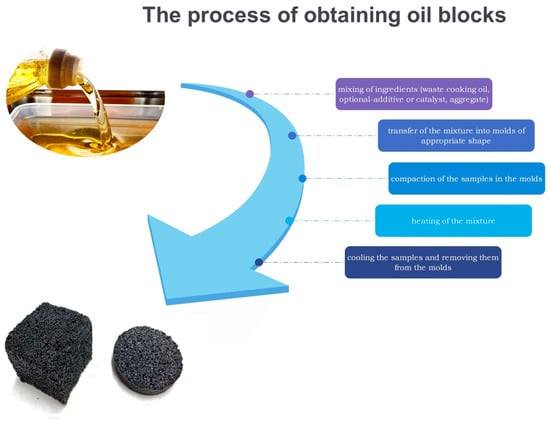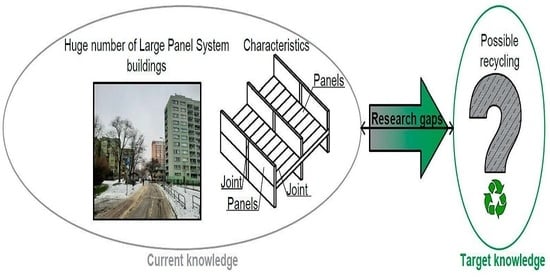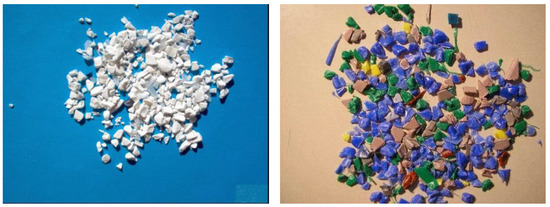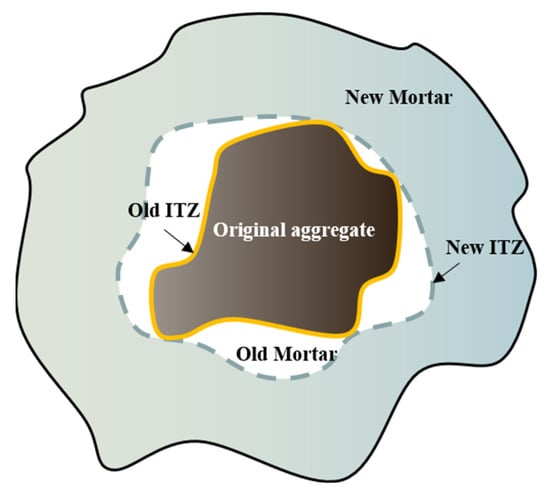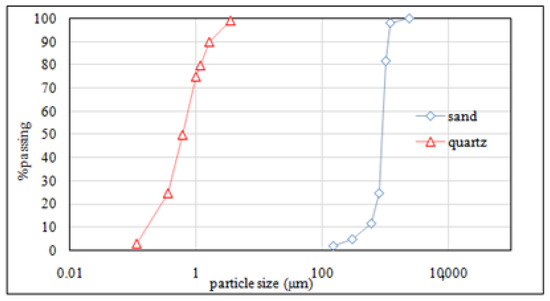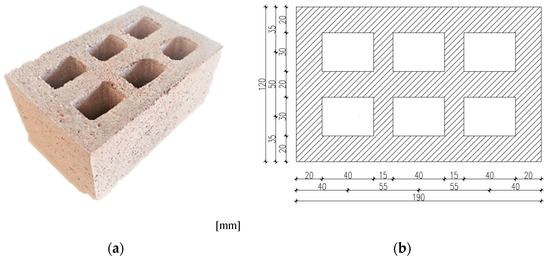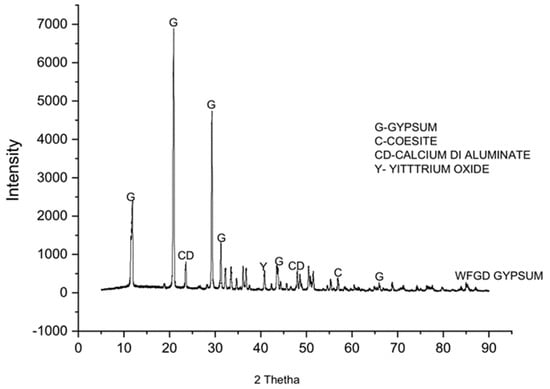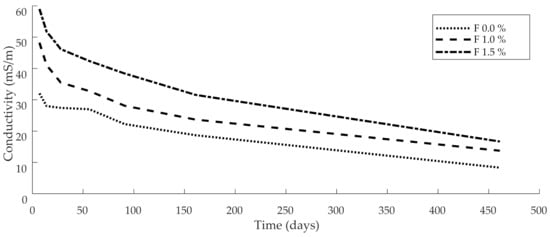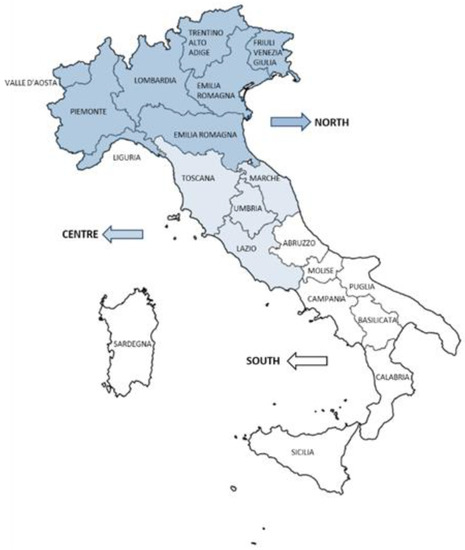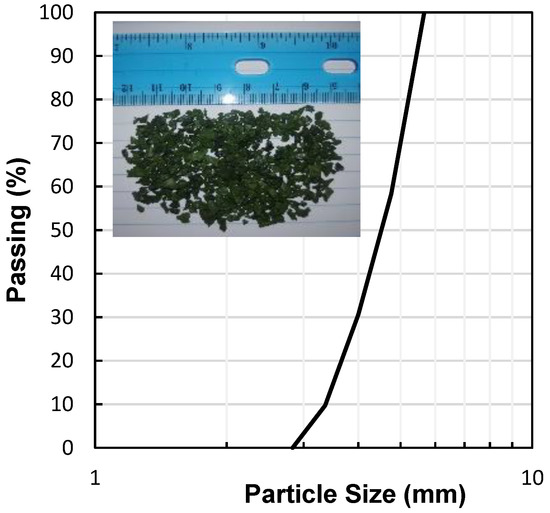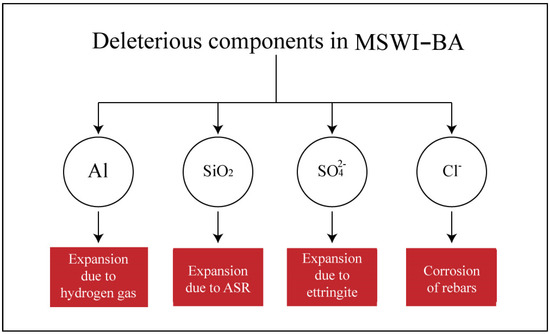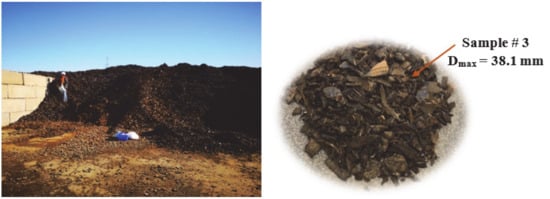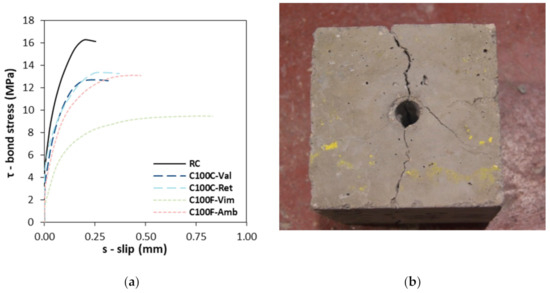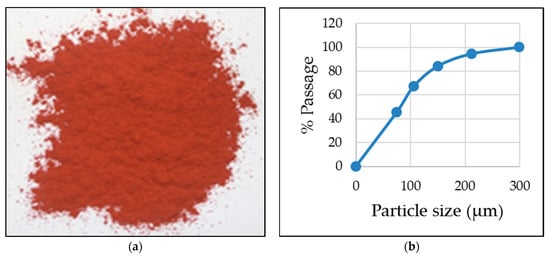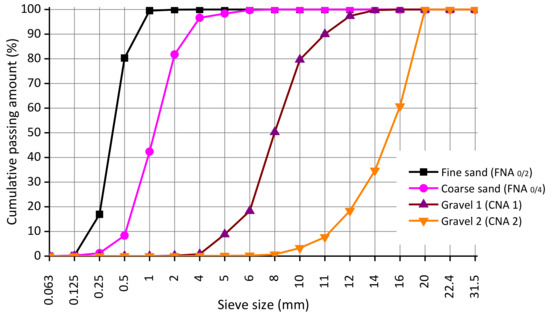Utilization of Waste Materials in Building Engineering
Share This Topical Collection
Editor
 Prof. Dr. Łukasz Sadowski
Prof. Dr. Łukasz Sadowski
 Prof. Dr. Łukasz Sadowski
Prof. Dr. Łukasz Sadowski
E-Mail
Website
Collection Editor
Department of Building Engineering, Wroclaw University of Science and Technology, Wybrzeze Wyspianskiego 27, 50-370 Wrocław, Poland
Interests: cementitious materials; sustainable development; artificial intelligence; nondestructive testing; surface morphology
Special Issues, Collections and Topics in MDPI journals
Topical Collection Information
Dear Colleagues,
Environmental protection, as well as improvement of the quality of people's lives, requires proper waste management. This boils down to a large extent to the recovery of raw materials through the use of recycling and disposal of wastes. Civil engineering has great potential for waste utilization. In particular, the production of building materials used for construction, renovation, and repair of buildings is a field of key importance. Particularly important seems to be the trend to reuse structurally useful elements or recycle raw materials as components for the production of new building elements.
Nowadays, an increasing number of important buildings are constructed with an emphasis on the effective use of waste materials. Bearing this in mind, this Topical Collection aims to present to all interested readers the latest achievements and share the experience in the field of utilization of waste materials in building engineering. Special focus will be placed on the latest original scientific research and application examples. A lot of emphasis will be put on analysing the economic efficiency of the solutions presented.
I invite you to submit interesting articles that go beyond the scope of construction. It is interdisciplinary articles that are extremely welcome. This approach serves to build a new approach towards effective waste management and care for our common natural environment.
Dr. Łukasz Sadowski
Collection Editor
Manuscript Submission Information
Manuscripts should be submitted online at www.mdpi.com by registering and logging in to this website. Once you are registered, click here to go to the submission form. Manuscripts can be submitted until the deadline. All submissions that pass pre-check are peer-reviewed. Accepted papers will be published continuously in the journal (as soon as accepted) and will be listed together on the collection website. Research articles, review articles as well as short communications are invited. For planned papers, a title and short abstract (about 100 words) can be sent to the Editorial Office for announcement on this website.
Submitted manuscripts should not have been published previously, nor be under consideration for publication elsewhere (except conference proceedings papers). All manuscripts are thoroughly refereed through a single-blind peer-review process. A guide for authors and other relevant information for submission of manuscripts is available on the Instructions for Authors page. Buildings is an international peer-reviewed open access monthly journal published by MDPI.
Please visit the Instructions for Authors page before submitting a manuscript.
The Article Processing Charge (APC) for publication in this open access journal is 2600 CHF (Swiss Francs).
Submitted papers should be well formatted and use good English. Authors may use MDPI's
English editing service prior to publication or during author revisions.
Keywords
- construction
- civil engineering
- buildings
- building materials
- waste management
- utilization
- recycling
- economic efficiency
- renovation
- repair
Published Papers (21 papers)
Open AccessArticle
Assessing the Suitability of Phosphate Waste Rock as a Construction Aggregate
by
Yahya El Berdai, Romain Trauchessec, Yassine Taha, Amine el Mahdi Safhi, Rachid Hakkou and Mostafa Benzaazoua
Cited by 2 | Viewed by 931
Abstract
Phosphate waste rock (PWR) is gaining attention as a potential alternative aggregate for concrete. Its valorization could reduce the environmental impacts of quarrying natural resources and stockpiling phosphate mining waste. This study comprehensively investigated the properties of fine and coarse aggregates produced from
[...] Read more.
Phosphate waste rock (PWR) is gaining attention as a potential alternative aggregate for concrete. Its valorization could reduce the environmental impacts of quarrying natural resources and stockpiling phosphate mining waste. This study comprehensively investigated the properties of fine and coarse aggregates produced from three rock types selected from PWR in Morocco: Flint, Phosflint, and Dolomite. A range of techniques was used to study their characteristics, including microstructural observations up to the microscale and X-ray computed tomography (X-CT), mineralogical and chemical compositions, physical and geotechnical properties such as Los Angeles (LA), micro-Deval (M
DE), flexural strength, real dry density, and total porosity. The results showed that the coarse fractions of Flint, Phosflint, and Dolomite are code A or B of NF P 18-545 and exhibit good shape, density, and water absorption properties. Flint aggregates had the highest wear and fragmentation resistance with the lowest and finest porosity. They contained mainly quartz but also small proportions of Dolomite and fluorapatite. Phosflint aggregates had high resistance, shown by code A in LA and M
DE values, and flexural strength equal to 17.1 MPa. They contained phosphate microfacies with a Ca/P atomic ratio equal to 1.8, cemented by cryptocrystalline silica. Dolomite aggregates’ mineralogical make-up consisted mainly of dolomite with the presence of quartz particles in addition to impurities. They also displayed significant total porosity (10–12%), as confirmed by X-CT. These findings were discussed to develop insights for the use of three types of PWR as alternative aggregates for concrete production. This investigation contributes to unveiling the properties of PWR as concrete aggregates and encourages circularity between the mining and construction sectors.
Full article
►▼
Show Figures
Open AccessReview
Recycling of Mine Wastes in the Concrete Industry: A Review
by
Aiman El Machi, Yahya El Berdai, Safaa Mabroum, Amine el Mahdi Safhi, Yassine Taha, Mostafa Benzaazoua and Rachid Hakkou
Cited by 7 | Viewed by 2031
Abstract
The mining industry generates a substantial amount of waste materials, including tailings and waste rocks, which, if not managed correctly, pose threats to the environment and public health due to their long-term accumulation and disposal. Simultaneously, the construction sector consumes important amounts of
[...] Read more.
The mining industry generates a substantial amount of waste materials, including tailings and waste rocks, which, if not managed correctly, pose threats to the environment and public health due to their long-term accumulation and disposal. Simultaneously, the construction sector consumes important amounts of natural resources like water and rocks. However, research shows that inert mining waste can serve as a substitute for conventional raw materials in construction, particularly in concrete. This review focuses on using mining waste as an alternative to concrete technology to promote cleaner practices in construction and circular economy in mining. Mining waste, with its physical characteristics and chemical composition, can function as diverse components in concrete, such as sand, aggregates, and binders. This article assesses these properties and explores their incorporation into concrete production, aiming to stimulate further research and development, foster environmentally responsible approaches, and underline the direct link to reaching SDGs to achieve sustainability in the construction industry.
Full article
►▼
Show Figures
Open AccessReview
Composite Materials Based on Waste Cooking Oil for Construction Applications
by
Anita Staroń
Cited by 8 | Viewed by 4019
Abstract
Used cooking oil after the thermal processing of food constitutes a difficult-to-degrade waste product, the quantities of which are increasing yearly due to the increasing pace of life and the establishment of new food service outlets. Frying allows for the preparation of a
[...] Read more.
Used cooking oil after the thermal processing of food constitutes a difficult-to-degrade waste product, the quantities of which are increasing yearly due to the increasing pace of life and the establishment of new food service outlets. Frying allows for the preparation of a large amount of food for consumption in a short time but alters the physical and chemical properties of the oil used, which then becomes harmful to human health. Despite several possibilities for using waste cooking oil, environmentally safe ways to manage it are still being sought. In an effort to reduce the amount of waste, using cooking oil as a binder for the benefit of the construction industry seems plausible. This paper presents a literature review on the use of waste cooking oil to produce composite materials for construction purposes, addressing the process parameters of tipping solid materials comprising vegetable oil as a binder and examining their strength and absorbability. Methods of obtaining oil binders, either comprising vegetable oil alone or various mixtures, are described. In addition, the advantages of producing and using “green” materials are presented.
Full article
►▼
Show Figures
Open AccessReview
Large Panel System Technology in the Second Half of the Twentieth Century—Literature Review, Recycling Possibilities and Research Gaps
by
Seweryn Malazdrewicz, Krzysztof Adam Ostrowski and Łukasz Sadowski
Cited by 9 | Viewed by 6460
Abstract
Large panel system (LPS) buildings, during the 1950s–1990s, were the most widespread among precast systems and are still a huge part of some national housing stocks. Disadvantages in characteristics, poor quality of all construction stages, sudden disasters and poor retrofit and repair techniques
[...] Read more.
Large panel system (LPS) buildings, during the 1950s–1990s, were the most widespread among precast systems and are still a huge part of some national housing stocks. Disadvantages in characteristics, poor quality of all construction stages, sudden disasters and poor retrofit and repair techniques can result in demolishing some LPS buildings and thus the creation of huge amounts of waste. There is urgent need of evaluating the possibility of reusing the elements of LPS buildings. The novelty of the article is based on the formulation of research gaps in terms of recycling these buildings and the justification of such need. The authors reviewed the current state of knowledge regarding characteristics of LPS buildings, directions of retrofitting, durability and their locations within cities. The possibility of recycling elements of LPS buildings was analysed. The findings are that concrete load bearing panels, proved to be in satisfactory conditions in terms of strength and durability, have the possibility to be recycled into recycled coarse aggregate (RCA), so such waste could be beneficial for concrete. However, there are research gaps of such an application highlighted in the text. The authors suggest that conducting comprehensive basic research in this area could have significant benefits for the next generation of researchers and engineers.
Full article
►▼
Show Figures
Open AccessArticle
Eleven-Year Follow-Up on the Effect of Thermoplastic Aggregates’ Addition to Reinforced Concrete
by
Stamatia Gavela, Eleni Rakanta, Afroditi Ntziouni and Vasilia Kasselouri-Rigopoulou
Cited by 2 | Viewed by 1451
Abstract
An experimental investigation was carried out to study the effect of thermoplastics’ addition to reinforcement corrosion and the durability of concrete. A long-term study is necessary for the final decision on the possibility of the utilization of materials, and this study is contributing
[...] Read more.
An experimental investigation was carried out to study the effect of thermoplastics’ addition to reinforcement corrosion and the durability of concrete. A long-term study is necessary for the final decision on the possibility of the utilization of materials, and this study is contributing to this direction. Two types of thermoplastics were used, high-density polyethylene and polypropylene. The percentage of replacement of conventional aggregates was 0% and 12% by volume. After being demolded and cured for 7 days, the specimens were immersed in 3.5 wt% NaCl solution for 240 days. Afterwards, they were left in laboratory ambient air up to 11 years. Carbonation depth and the volume of permeable voids were determined. Optical microscopy, stereoscopy, and electrochemical impedance spectroscopy measurements were performed. Results showed that replacing conventional limestone aggregates with the particular two thermoplastics does not have a negative impact on rebars’ corrosion behavior. Optical microscopy and stereoscopy of rebars’ surface revealed that the corrosion process has initiated and carbonation is observed in all mixes, but corrosion rates are negligible for all the mixes studied.
Full article
►▼
Show Figures
Open AccessArticle
Coupled Effect of Granite Sand and Calcium Lignosulphonate on the Strength Behavior of Cohesive Soil
by
Gudla Amulya, Arif Ali Baig Moghal, B. Munwar Basha and Abdullah Almajed
Cited by 12 | Viewed by 2290
Abstract
This paper assesses the significance of stabilizing clay soil with calcium lignosulphonate (CLS) and granite sand (GS). Unconfined compressive strength (
) and hydraulic conductivity (
K) are taken as performance indicators and the effect of varying dosages of GS
[...] Read more.
This paper assesses the significance of stabilizing clay soil with calcium lignosulphonate (CLS) and granite sand (GS). Unconfined compressive strength (
) and hydraulic conductivity (
K) are taken as performance indicators and the effect of varying dosages of GS (30%, 40%, and 50%) and CLS (0.5%, 1%, 1.5%, and 2%) at different curing periods on
and
K are examined. The best fit regression equations have been proposed to relate
and
K of untreated clay soil and stabilized clay using GS and CLS. The proposed nonlinear regression equations provide details of experimental data and aid in estimating
and
K very efficiently and reliably for targeted geotechnical applications from a sustainable perspective.
Full article
►▼
Show Figures
Open AccessArticle
Effect of Composite Impregnation on Properties of Recycled Coarse Aggregate and Recycled Aggregate Concrete
by
Chuheng Zhong, Peng Tian, Yuhua Long, Jinzhi Zhou, Kun Peng and Chengxin Yuan
Cited by 9 | Viewed by 2091
Abstract
To improve the properties of recycled aggregate concrete, single and composite impregnation treatments were carried out on recycled coarse aggregates with sodium silicate solution, silane slurry, and polyvinyl alcohol solution. The effects of the three chemical modifiers and different impregnation methods on the
[...] Read more.
To improve the properties of recycled aggregate concrete, single and composite impregnation treatments were carried out on recycled coarse aggregates with sodium silicate solution, silane slurry, and polyvinyl alcohol solution. The effects of the three chemical modifiers and different impregnation methods on the apparent density, water absorption, and crushing index of recycled coarse aggregates, as well as the basic properties of recycled aggregate concrete, were investigated. Additionally, the microstructure of the surface of recycled coarse aggregate and the interior of recycled aggregate concrete were analyzed by scanning electron microscopy. The experimental results show that the water absorption of recycled coarse aggregate soaked in polyvinyl alcohol solution decreases most significantly, reaching 64.56%. Only the combination of sodium silicate and silane impregnation produces a positive compounding effect, with a significant increase in the apparent density and a significant reduction in the crushing index of the recycled coarse aggregate. Compared with untreated concrete, the slump, compressive strength, splitting tensile strength, and flexural strength of recycled aggregate concrete prepared by sodium silicate and silane composite impregnation are increased by 9.8%, 26.53%, 21.70%, and 14.72%, respectively. The microstructure analysis shows that the composite impregnation treatment of sodium silicate and silane is most conducive to filling the cracks and holes on the surface of recycled coarse aggregate, which makes the interfacial transition zone of recycled aggregate concrete more compact and the structure more stable.
Full article
►▼
Show Figures
Open AccessArticle
The Novelty of Using Glass Powder and Lime Powder for Producing UHPSCC
by
Kareem S. Ghareeb, Hossam E. Ahmed, Tamer H. El-Affandy, Ahmed F. Deifalla and Taha A. El-Sayed
Cited by 36 | Viewed by 3308
Abstract
In recent years, UHP self-compacted concrete is an innovative category of concrete that has attached a lot of attention because of its higher durability and compressive strength than conventional concrete. So, to overcome the cost of preparation of UHPC and preservation of high-strength
[...] Read more.
In recent years, UHP self-compacted concrete is an innovative category of concrete that has attached a lot of attention because of its higher durability and compressive strength than conventional concrete. So, to overcome the cost of preparation of UHPC and preservation of high-strength deformation and rheological characteristic of self-compacting concrete when replacing a part of expensive cement with three types of production waste. In addition, the problem of reducing environmental pollution is solved. In this study. recycled glass (GP) and lime (LP) powder were used as substitution materials in the manufacture of the UHPSCC. The flowability of UHPSCC was measured by slump flow,
, V-funnel tests as an indication for the capability of filling and J-ring tests as an indication for the capability of passing. Furthermore, durability and mechanical properties were investigated. The elevated temperature effect was investigated on several UHPCSCC samples with glass (GP) and lime (LP) powder. The test results showed that the incorporation of GP and LP partially replaced cement improved the flowability of UHPSCC. The compressive, tensile, and flexural strength were enhanced by using GP till 20% replacement of cement also, the compression strength values were highly improved by using LP replacement of cement at different ages for (hot and normal curing). The highly compressive strength values for UHPSCC mixes with a 20% replacement ratio of GP and LP as cement replacement materials were 119.0 and 128.8 MPa under hot curing regimes and increased by 6.25% and 9.62%, respectively, than that of similar mixes under normal curing regimes at 90 days. The highly splitting and flexural strength values for UHPSCC 7 mix with 20% replacement level of LP and UHPSCC 9 mix with 20% replacement level of LP and GP were reported at 11.80 and 17.85 MPa which increased by 24.20% and 58.60%, respectively, compared to the control mix.
Full article
►▼
Show Figures
Open AccessArticle
Graphite Tailings’ Effects on Mechanical and Physical Properties of Eco-Efficient Steel Fiber-Reinforced Concrete
by
Hongbo Liu, Hourui Duan, Hongshuai Gao, Zhongrui Wang and Jing Zhang
Cited by 5 | Viewed by 2853
Abstract
As impacted by environmental concerns and the demand for high-strength concrete, novel ideas of the development of eco-efficient, steel fiber-reinforced concrete have been proposed. In this study, the aim is to develop a type of eco-efficient steel fiber-reinforced concrete with graphite tailings and
[...] Read more.
As impacted by environmental concerns and the demand for high-strength concrete, novel ideas of the development of eco-efficient, steel fiber-reinforced concrete have been proposed. In this study, the aim is to develop a type of eco-efficient steel fiber-reinforced concrete with graphite tailings and steel fiber. Steel fibers act as a type of concrete toughening material, and graphite tailings serve as a partially alternated aggregate to sand. Mechanical properties exhibited by the concrete are assessed based on different volume fractions of graphite tailings (i.e., 0%, 10% and 20%). The concrete mixture proportion is determined in accordance with the theory of particle densely packing, and the concrete mechanical properties are more specifically studied by performing compressive and flexural tests. As indicated by the results, the maximal mixed bulk density of graphite tailings at different grades is greater than that of sand, so concrete with graphite tailings exhibits higher compressive strength. For the content of graphite tailings, the addition of graphite tailings impacts the interfacial adhesion between aggregates and cementing matrix, thereby inhibiting bifurcation and convergence of cracks. However, excessive mixing of graphite tailings would decrease the specimen’s effective water-to-binder ratio (W/B), thereby adversely affecting the internal structure of the concrete. The amount of graphite tailings impacts the distribution of steel fibers at the concrete interface, which could be the most conducive to the distribution of steel fibers under the graphite tailings’ content of 10%. This study demonstrates that graphite tailings and steel fibers are feasible to prepare eco-efficient, steel fiber-reinforced concrete.
Full article
►▼
Show Figures
Open AccessArticle
The Effect of Bone Ash on the Physio-Chemical and Mechanical Properties of Clay Ceramic Bricks
by
Numfor Linda Bih, Assia Aboubakar Mahamat, Chukwuemeka Chinweze, Olugbenga Ayeni, Hounkpè Jechonias Bidossèssi, Peter Azikiwe Onwualu and Emmanuel E. Boakye
Cited by 11 | Viewed by 6033
Abstract
Bone ash waste can be used to fabricate clay ceramic bricks, consequently managing their pollution of the environment. This is because bone ash (BA) and clay predominantly consist of calcium and alumina-silicate, respectively, which are components of clay ceramic brick (CCB) materials. This
[...] Read more.
Bone ash waste can be used to fabricate clay ceramic bricks, consequently managing their pollution of the environment. This is because bone ash (BA) and clay predominantly consist of calcium and alumina-silicate, respectively, which are components of clay ceramic brick (CCB) materials. This study aims to investigate the effect of bone ash and temperature on the physio-chemical and mechanical properties of CCB. Different percentages of bone ash (5%, 10%, 15%, and 20%) were added to clay and heat treated at temperatures of 100 °C, 300 °C, 600 °C, and 900 °C, and their compressive strengths were measured. Prior to the determination of their mechanical properties, the CCB chemical and phase compositions were characterized using FTIR spectroscopy and X-ray diffraction (XRD). The CCB microstructure was evaluated with scanning electron microscopy (SEM) and the compressive strength was tested. The results suggest that the addition of bone ash (10% and 15%) improves the compressive strength and water absorption properties after heat treatment of CCB at higher temperatures.
Full article
►▼
Show Figures
Open AccessArticle
Thermal Performance Assessment of a Wall Made of Lightweight Concrete Blocks with Recycled Brick and Ground Polystyrene
by
Hrvoje Krstić, Ivana Miličević, Damir Markulak and Mihaela Domazetović
Cited by 13 | Viewed by 4506
Abstract
Hollow concrete masonry blocks made of low strength self-compacting concrete with recycled crushed brick and ground polystyrene as an aggregate (RBC-EP blocks), and their expected structural role as masonry infill in steel frames, has been confirmed in previous research studies, thus the extensive
[...] Read more.
Hollow concrete masonry blocks made of low strength self-compacting concrete with recycled crushed brick and ground polystyrene as an aggregate (RBC-EP blocks), and their expected structural role as masonry infill in steel frames, has been confirmed in previous research studies, thus the extensive investigation of thermal properties is presented in this paper to fully approve their potential application in practice. The Heat Flow and Temperature Based Method was used to conduct in-situ measurements of the wall thermal transmittance (U-value). The experimental U-values of the wall without insulation varied from 1.363 to 1.782 W/m
2·K, and the theoretical value was calculated to be 2.01 W/m
2·K. Thermal conductivity of the material used for making RBC-EP blocks was measured in a laboratory by using a heat flow meter instrument. To better understand the thermal performance characteristics of a wall constructed from RBC-EP blocks, a comparison with standard materials currently used and found on the market was performed. Walls constructed from RBC-EP blocks show an improvement of building technology and environmentally based enhancement of concrete blocks, since they use recycled materials. They can replace standard lightweight concrete blocks due to their desired mechanical properties, as well as the better thermal performance properties compared to commonly used materials for building walls.
Full article
►▼
Show Figures
Open AccessArticle
Physical, Chemical and Geotechnical Characterization of Wet Flue Gas Desulfurization Gypsum and Its Potential Application as Building Materials
by
Thandiwe Sithole, Tebogo Mashifana, Dumisane Mahlangu and Leonel Tchadjie
Cited by 9 | Viewed by 3491
Abstract
In South Africa, coal represents the primary source of energy used for electricity generation. Coal power plants use the wet flue gas desulfurization (WFGD) process to remove sulfur dioxide (SO
2) from their flue gas. However, this technology produces a large amount
[...] Read more.
In South Africa, coal represents the primary source of energy used for electricity generation. Coal power plants use the wet flue gas desulfurization (WFGD) process to remove sulfur dioxide (SO
2) from their flue gas. However, this technology produces a large amount of synthetic gypsum, resulting in waste disposal and environmental pollution. This study investigated the physical, chemical and geotechnical properties of WFGD gypsum and its potential application to develop cement-free bricks. WFGD gypsum was collected from a coal power plant in South Africa. It was found that the principal oxides of WFGD gypsum were sulfur trioxide (SO
3) and calcium oxide (CaO), which represented more than 90% of the total weight. Calcium sulfate (CaSO
4) and calcium di aluminate (CA2) were the predominant minerals in the raw material. The density of the WFGD gypsum was 2.43 g/cm
3. The maximum dry density and optimum moisture content values were 1425 kg/m
3 and 18.5%, respectively. WFGD gypsum had a liquid limit of 51% but did not display any plasticity characteristics. The optimum curing temperature of gypsum bricks was 40 °C. WFGD gypsum-based bricks exhibited compressive strength of up to 2.3 MPa and a density of about 28% less than that of typical clay bricks. Additionally, there was no significant decrease in compressive strength after seven wet/dry cycles. These results show that WFGD gypsum could be used to produce lightweight building materials with low strength requirements.
Full article
►▼
Show Figures
Open AccessEditor’s ChoiceArticle
Effect of Amount of Fibre and Damage Level on Service Life of SFR Recycled Concrete in Aggressive Environment
by
Petr Lehner and Marie Horňáková
Cited by 17 | Viewed by 3029
Abstract
The paper presents a numerical calculation of the service life of concrete structures considering the effect of chlorides in the case of the material properties of structural lightweight waste aggregate concrete. Different amounts of fibres (0.0%, 1.0%, and 1.5%) and different values of
[...] Read more.
The paper presents a numerical calculation of the service life of concrete structures considering the effect of chlorides in the case of the material properties of structural lightweight waste aggregate concrete. Different amounts of fibres (0.0%, 1.0%, and 1.5%) and different values of compressive preloading (0%, 50%, and 100% of the ultimate strength capacity-USC) were considered. The subject of the research was the comparison of the influence of the constant diffusion coefficient and the time-dependent diffusion coefficient regarding the service life of the selected structure. Nine groups of material characteristics in combination with two numerical models are compared. A time-dependent diffusion coefficient and maturation coefficient, which were determined based on long-term monitoring (up to 461 days), were accepted for the numerical modelling. Thanks to time-dependent parameters, it is possible to observe the results of the theoretical service life of the structure and the influence of the mentioned factors. The analysed structure can be considered as the upper layer of an industrial floor in a chemical plant. It is important to determine the theoretical service life at which the structure shall be inspected or replaced. The results, in general, show that a higher amount of fibres reduces the service life as well as the preloading of the structure. An exception was a mixture with 1% of fibre loaded to 50% USC, which shows a lower diffusion coefficient than the specimens without preloading.
Full article
►▼
Show Figures
Open AccessArticle
An Overview about the Current Situation on C&D Waste Management in Italy: Achievements and Challenges
by
Javier Cárcel-Carrasco, Elisa Peñalvo-López, Manuel Pascual-Guillamón and Fidel Salas-Vicente
Cited by 16 | Viewed by 4079
Abstract
The disposal volume of material for Construction and Demolition in Europe is increasing each year, that the European Union has decided to take control of the matter unifying practices and goals to achieve. This article analyses how waste management works in Italy adjusting
[...] Read more.
The disposal volume of material for Construction and Demolition in Europe is increasing each year, that the European Union has decided to take control of the matter unifying practices and goals to achieve. This article analyses how waste management works in Italy adjusting its system to the European Union, regarding Construction and Demolition, taking into consideration the disposal of material coming from C&D (Construction and Demolition) production. In Italy, the disposition may differ according to the regions in which it is divided, and this must be taken into consideration when analysing information that reflects the different logistical aspect linked to the territory. It is also necessary to consider how the volume of waste can vary according to the size of the region considered and the type of industrial development to which it belongs. The analysis of the Italian situation shows their achievements regarding reaching a good level of recycling waste volume; indeed, their amount of C&D recycled waste after 2010 was always up to the 70% value established by the European Union, though barriers are still present in the field of waste management. Through data collecting, it has been seen the different volume that is generated in construction-related activities in the country, along with the recovered waste volume. Thus, the goal of this paper is to deepen the general knowledge on waste produced by Construction and Demolition in Italy and waste management practices adopted according to the European Union.
Full article
►▼
Show Figures
Open AccessArticle
Strategies for Effective Waste Reduction and Management of Building Construction Projects in Highly Urbanized Cities—A Case Study of Hong Kong
by
Ann T. W. Yu, Irene Wong, Zezhou Wu and Chi-Sun Poon
Cited by 29 | Viewed by 13021
Abstract
Hong Kong is a densely populated city with high-rise developments, and as in other metropolitan cities, the amount of waste generated from construction projects in the city is increasing annually. The capacity of existing landfills is expected to be saturated by the 2020s.
[...] Read more.
Hong Kong is a densely populated city with high-rise developments, and as in other metropolitan cities, the amount of waste generated from construction projects in the city is increasing annually. The capacity of existing landfills is expected to be saturated by the 2020s. Construction waste management has been implemented for years but the performance is still not satisfactory. The aim of this research paper is to explore and formulate strategies and measures for effective construction waste management and reduction in highly urbanized cities such as Hong Kong. A desktop study on construction waste management practices was carried out for a preliminary understanding of the current situation in Hong Kong. Semistructured interviews and focus group meetings were further conducted to shed light on how to improve construction waste reduction and management in Hong Kong. The main contributions of this research study are the potential short-term, medium-term, and long-term strategies, which are related to the design stage, tender stage, construction stage, and government support. The five major strategies recommended are financial benefits to stakeholders, public policies in facilitating waste sorting, government supports for the green building industry, development of a mature recycling market, and education and research in construction waste minimization and management.
Full article
Open AccessArticle
Dynamic Properties of Granulated Rubber Using Different Laboratory Tests
by
Ahmed Moussa, Hany El Naggar and Abouzar Sadrekarimi
Cited by 4 | Viewed by 2606
Abstract
Due to the socio-environmental hazards arising from the stockpiling of disposed scrap tires, the necessity to utilize such material in civil construction and other applications is deemed mandatory. The lightweight of rubber and its high damping capacity are excellent properties of a geomaterial
[...] Read more.
Due to the socio-environmental hazards arising from the stockpiling of disposed scrap tires, the necessity to utilize such material in civil construction and other applications is deemed mandatory. The lightweight of rubber and its high damping capacity are excellent properties of a geomaterial that could be used successfully in seismic isolation and vibration damping applications in civil construction. Scrap tires could be shredded into specific sizes, and their category and application depend on their particle size range. Thus, understanding the dynamic properties and behavior of shredded scrap tires under cyclic loading is of paramount importance. In this study, the dynamic characteristics of granulated rubbers (<12 mm) are investigated using cyclic triaxial and cyclic direct simple shear tests. The effect of using different testing techniques, i.e., cyclic triaxial test (CTT) and cyclic simple shear test (CSST), on the dynamic properties of granulated rubber material is further addressed. Undrained cyclic triaxial and constant-volume direct simple shear tests are conducted on granulated rubber samples under vertical consolidation stresses of 25, 50, 100 and 200 kPa at a frequency of 0.5 Hz. The shear strain amplitude is varied from 0.01% to 10%. Furthermore, the variations of shear modulus and damping ratio with shear strain amplitude are presented. In addition, the obtained dynamic properties from this study are compared with existing experimental data from the literature. It was found that the ranges of shear moduli of granulated rubber from the CTT and CSST are 278 to 2647 kPa and 85 to 2270 kPa, respectively. Moreover, the damping ratios obtained from CTT were higher than those from CSST at shear strains of less than 1%. The damping ratio of granulated rubber was also found to be independent of the vertical consolidation stress.
Full article
►▼
Show Figures
Open AccessReview
A Review on Cementitious Materials Including Municipal Solid Waste Incineration Bottom Ash (MSWI-BA) as Aggregates
by
Jad Bawab, Jamal Khatib, Said Kenai and Mohammed Sonebi
Cited by 35 | Viewed by 4848
Abstract
Waste management is a vital environmental issue in the world today. Municipal solid wastes (MSWs) are discarded in huge quantities on a daily basis and need to be well controlled. Incineration is a common method for reducing the volume of these wastes, yet
[...] Read more.
Waste management is a vital environmental issue in the world today. Municipal solid wastes (MSWs) are discarded in huge quantities on a daily basis and need to be well controlled. Incineration is a common method for reducing the volume of these wastes, yet it produces ashes that require further assessment. Municipal solid waste incineration bottom ash (MSWI-BA) is the bulk byproduct of the incineration process and has the potential to be used in the construction sector. This paper offers a review of the use of MSWI-BA as aggregates in cementitious materials. With the growing demand of aggregates in cementitious materials, MSWI-BA is considered for use as a partial or full alternative. Although the physical and chemical properties of MSWI-BA are different than those of natural aggregates (NA) in terms of water absorption, density, and fineness, they can be treated by various methods to ensure suitable quality for construction purposes. These treatment methods are classified into thermal treatment, solidification and stabilization, and separation processes, where this review focuses on the techniques that reduce deficiencies limiting the use of MSWI-BA as aggregates in different ways. When replacing NA in cementitious materials, MSWI-BA causes a decrease in workability, density, and strength. Moreover, they cause an increase in water absorption, air porosity, and drying shrinkage. In general, the practicality of using MSWI-BA in cementitious materials is mainly influenced by its treatment method and the replacement level, and it is concluded that further research, especially on durability, is required before MSWI-BA can be efficiently used in the production of sustainable cementitious materials.
Full article
►▼
Show Figures
Open AccessArticle
Effect of the Particle Size on TDA Shear Strength Parameters in Triaxial Tests
by
Hany El Naggar and Khaled Zahran
Cited by 8 | Viewed by 3153
Abstract
Tire recycling and reuse in North America and worldwide have increased considerably, intending to reduce the harmful effects of scrap tires on the environment. Accordingly, the use of tire derived aggregates (TDA) as backfill material in civil engineering applications is on the rise
[...] Read more.
Tire recycling and reuse in North America and worldwide have increased considerably, intending to reduce the harmful effects of scrap tires on the environment. Accordingly, the use of tire derived aggregates (TDA) as backfill material in civil engineering applications is on the rise at an unprecedented rate. However, to use TDA in the construction industry, its strength and stiffness parameters properties must be evaluated. One key factor that is known to influence the strength and stiffness of backfill material is the particle size of the used material. Hence, in this paper, a series of large-scale triaxial tests on five TDA samples with different maximum particle size, D
max, of 19.05, 25.4, 38.1, 50.8 and 76.2 mm were conducted to investigate the effect of the particle size on the obtained results. The tests were done under consolidated drained conditions using three confining pressures of 50, 100, and 200 kPa. The results showed that the shear strength of TDA increase by increasing the maximum particle size while the cohesion did not show a specific trend. Moreover, the samples exhibited an increase in the secant elastic modulus by increasing the particle size.
Full article
►▼
Show Figures
Open AccessArticle
Tests and Simulation of the Bond-Slip between Steel and Concrete with Recycled Aggregates from CDW
by
Miguel Bravo, António P. C. Duarte, Jorge de Brito and Luís Evangelista
Cited by 16 | Viewed by 2712
Abstract
This works intends to analyze, experimentally and numerically, the bond-slip behavior between steel and concrete made with recycled aggregates (RA) from construction and demolition waste (CDW) from several recycling plants in Portugal. Pull-out tests performed in concrete mixes with RA from CDW are
[...] Read more.
This works intends to analyze, experimentally and numerically, the bond-slip behavior between steel and concrete made with recycled aggregates (RA) from construction and demolition waste (CDW) from several recycling plants in Portugal. Pull-out tests performed in concrete mixes with RA from CDW are described and the main results (bond strength, bond-slip curves and failure modes) are shown and discussed. Additionally, a comparison between experimental and analytical (using equations from the literature) results is made. Afterwards, finite element (FE) models using Abaqus are developed and compared with the experimental results. The interface behavior between steel and concrete follows that prescribed by the CEB-FIP Model Code and uses as input experimental results. After validation, the models show good results when extended to predict the bond-slip behavior of the remaining concrete mixes studied. It is generally concluded that, per each 10% of natural aggregates replaced with RA from CDW, the bond strength decreases in circa 3% (numerically) to 5% (experimentally). CEB-FIP Model Code equations are shown to be able to predict bond strength and, when used in FE models, to lead to accurate simulation of the bond-slip response of steel and concrete with RA from CDW: the average ratio between numerical and experimental bond strengths is 0.95. In the scope of the FE models developed, a simple equation to be used along with those prescribed by CEB-FIP, which accounts for fraction and ratio of aggregates replaced, is put forward, as a first approach, showing good results.
Full article
►▼
Show Figures
Open AccessArticle
Seawater-Neutralized Bauxite Residue–Polyester Composites as Insulating Construction Materials
by
Maissa Adi, Basim Abu-Jdayil, Fatima Al Ghaferi, Sara Al Yahyaee and Maryam Al Jabri
Cited by 6 | Viewed by 2994
Abstract
Bauxite residue (BR) is one of the most commonly generated industrial wastes in the world. Thus, novel techniques for its proper utilization must be urgently developed. Herein, seawater-neutralized BR–unsaturated polyester resin (UPR) composites are presented as insulating construction materials with promising mechanical performance.
[...] Read more.
Bauxite residue (BR) is one of the most commonly generated industrial wastes in the world. Thus, novel techniques for its proper utilization must be urgently developed. Herein, seawater-neutralized BR–unsaturated polyester resin (UPR) composites are presented as insulating construction materials with promising mechanical performance. Composites with different BR content (0–60 vol.%) were prepared to evaluate the influence of BR content on the compressive, tensile, and flexural strengths as well as the moduli of BR–UPR composites. Experimental results revealed that adding BR particles to the polyester matrix increased the compressive properties (strength, modulus, and strain). The composites containing 20 vol.% BR showed the maximum compressive strength (108 MPa), while the composites with 30 vol.% BR exhibited the maximum compressive modulus (1 GPa). Moreover, the reduction in tensile and flexural strengths with an increase in the BR content may be attributed to the lower efficiency of stress transfer between the BR particle–polyester interface due to weak adhesion at the interface, direct contact between particles, and presence of voids or porosity. Although the tensile strength and failure stress decreased with increasing filler content, the produced composites showed outstanding tensile strength (4.0–19.3 MPa) compared with conventional insulating materials. In addition, the composite with 40 vol.% BR demonstrated a flexural strength of 15.5 MPa. Overall, BR–UPR composites showed excellent compatibility with promising mechanical properties as potential insulating construction materials.
Full article
►▼
Show Figures
Open AccessArticle
High-Performance Self-Compacting Concrete with Recycled Aggregates from the Precast Industry: Durability Assessment
by
Tiago Barroqueiro, Pedro R. da Silva and Jorge de Brito
Cited by 22 | Viewed by 4307
Abstract
The main objective of this paper is to provide the industry with a simple and practical way of disposing and recovering recycled waste from precast reinforced concrete elements rejected during the quality control process, while minimizing the consumption of natural resources in the
[...] Read more.
The main objective of this paper is to provide the industry with a simple and practical way of disposing and recovering recycled waste from precast reinforced concrete elements rejected during the quality control process, while minimizing the consumption of natural resources in the production of concrete and, consequently, significantly reducing the environmental impact of both (construction and demolition waste and extracting natural aggregates). In other words, with this work, the intention is to evaluate the feasibility of producing high-performance self-compacting concrete with a less environmental impact, by replacing natural aggregates (NA) with fine and coarse recycled aggregates resulting from the precast industry, which allows the future use of this type of aggregates in the industrial process without reservations concerning the expected durability performance. To achieve these objectives, six types of self-compacting concrete (SCC) were produced incorporating different amounts of recycled aggregates. Six replacement ratios for fine recycled aggregates (FRA) and coarse recycled aggregates (CRA) were considered: (FRA/CRA) 0/0; 25/25; 50/50; 100/100; 0/100 and 100/0%. Six different tests were carried out to characterize both the main concrete transport mechanisms and the main concrete degradation mechanisms, namely: the immersion water absorption test, capillary water absorption test, oxygen permeability test, chloride migration test, electrical resistivity test and carbonation test. The obtained results clearly demonstrate that, despite the negative influence of the inclusion of recycled aggregates, it is still possible to produce high-performance self-compacting concrete with perfectly acceptable durability properties.
Full article
►▼
Show Figures







